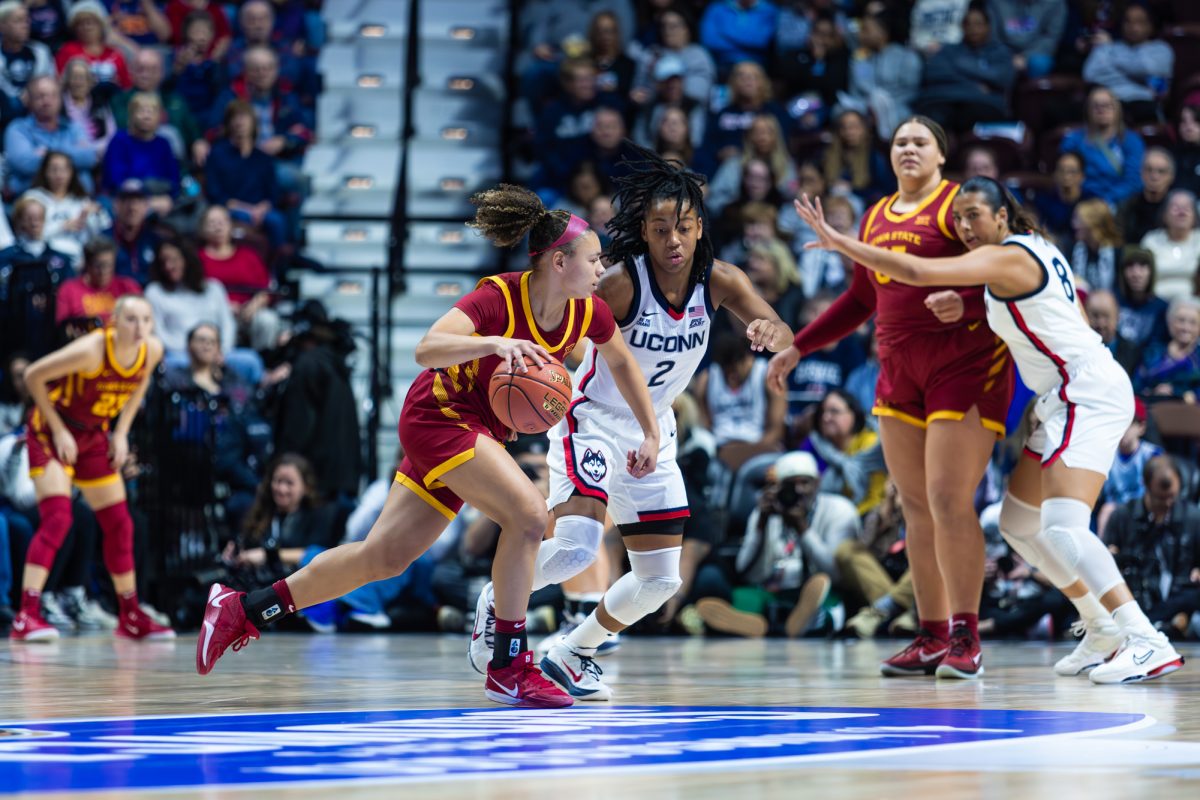The denim advantage
October 11, 2007
In this age of energy crises and impending environmental doom, the need to develop ecofriendly products is now more pertinent than ever.
Last week, Cotton Inc., which teamed up with natural cotton fiber insulator company Bonded Logic, developer of a cotton fiber insulation called UltraTouch, brought to Iowa State the Dirty Laundry Tour, an informational event that collected denim jeans to be eventually processed and made into insulation used for Habitat for Humanity home projects on the Gulf Coast.
The main selling point behind UltraTouch is that it is supposedly a better alternative to fiberglass insulation, is environmentally safer and more human friendly, and doesn’t have formaldehyde in it.
“[Bonded Logic] uses natural fibers to manufacture it,” said Andrea Samber, representative of Cotton Inc., of the environmental friendliness of UltraTouch.
But the appearance of UltraTouch as a better alternative than the industry standard of fiberglass insulation may be a bit facetious, said Steve Martin, university professor of materials science and engineering.
He said the thermal resistance, or “R-value,” of insulation is one of the very few differences in the types of home insulation products. Thermal resistance pertains to how well an insulation product holds in heat.
Fiberglass and UltraTouch appear to have the same R-rating of 3.75, which means a perceived better R-value depends solely on the area of the product.
“At the same thickness, fiberglass and cotton insulation have the same R-values. So they have the same intrinsic insulating ability,” he said.
According to Bonded Logic’s Web site, the UltraTouch product is made to provide “maximum R-value performance,” but since R-value is based on thickness and area, the comparison between the amount of R-value that fiberglass has versus UltraTouch is debatable.
“I think that it is safe to say that they have comparable R-values,” Martin said.
Flame resistance is another huge question about insulation. The UltraTouch product, Samber said, is treated with a borate solution, which boosts its flame retardation.
Martin said because fiberglass is made out of sand and glass, it is naturally fire resistant.
“Glass is absolutely fireproof,” he said.
The presence of formaldehyde in the manufacturing of fiberglass insulation is another selling point of UltraTouch, as the product doesn’t contain the solvent.
However, Martin said the amount of formaldehyde in fiberglass dries in the process, and today, the use of that chemical is optional.
Samber said UltraTouch does not give off volatile organic chemicals, so it doesn’t require any type of “protective gear” to install.
Martin said glass particles in blown fiberglass is the only human danger.
“You can buy formaldehyde-free fiberglass,” he said.
The sustainability of the UltraTouch product, which depends on either donations of denim jeans or increased growing of cotton, is where Martin said UltraTouch doesn’t compare to fiberglass insulation, since it is made of sand, limestone and soda ash, and is therefore renewable.
“While it may be cheaper in the long run to manufacture cotton insulation, it’s probably something that the normal person can’t go to Lowe’s and buy,” he said.






